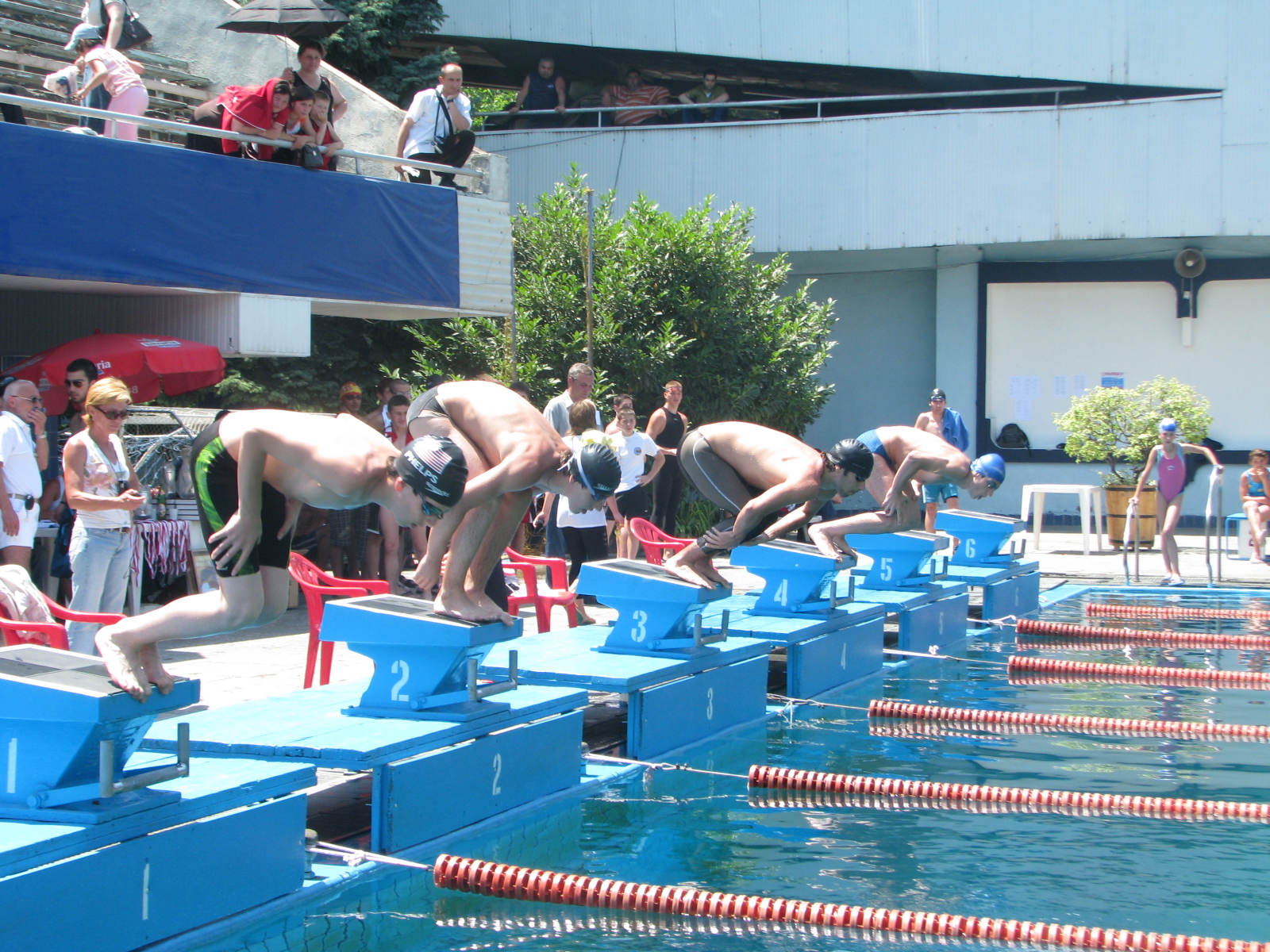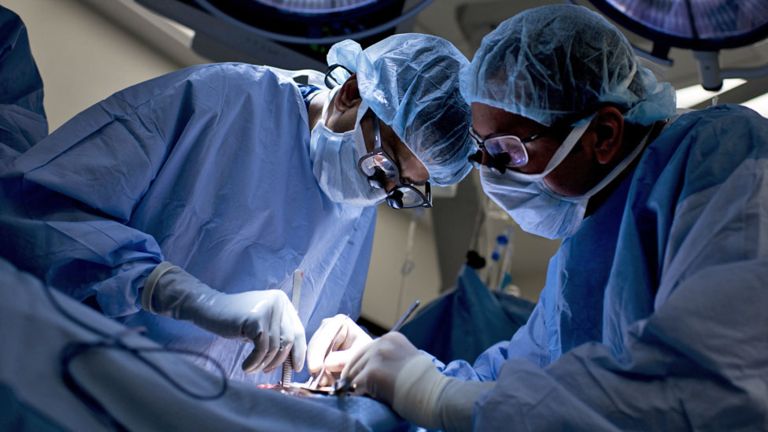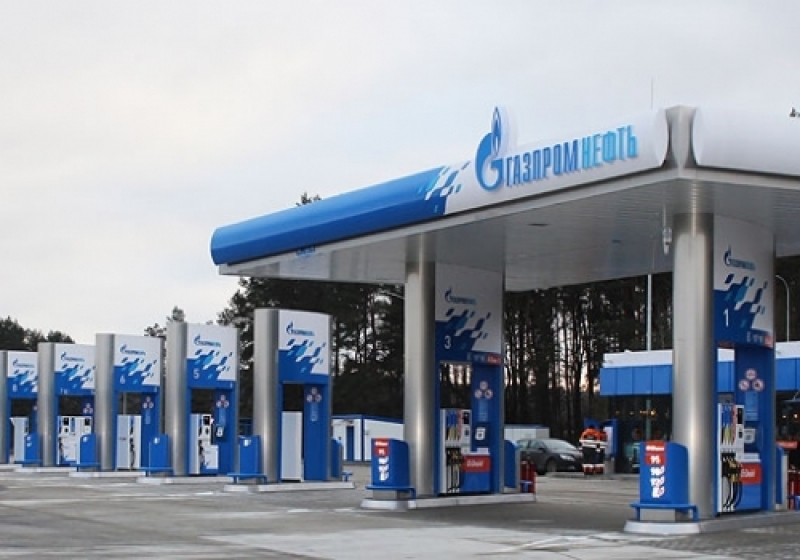Rating of pumps for heating systems in 2020
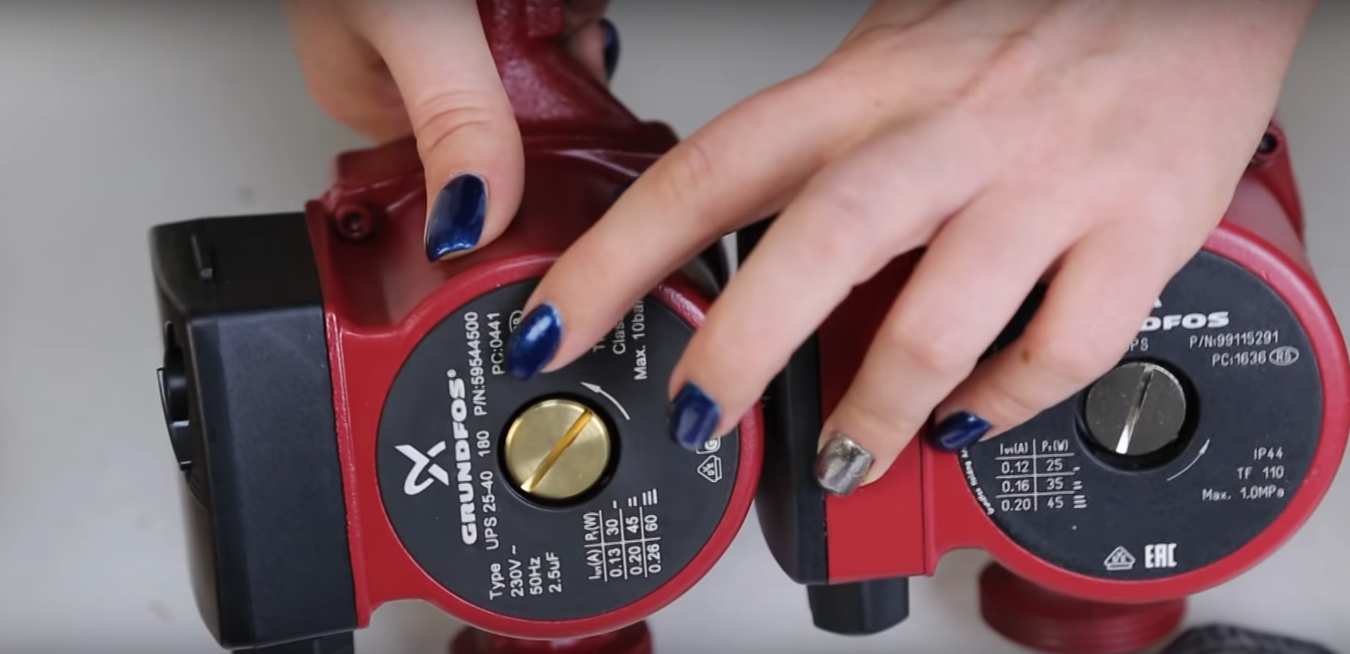
In the modern world, in private country and country houses for living in cold conditions, a heating system is installed based on the movement of hot water. Such pumps are circulating, that is, the water in the pipeline is constantly circulating using the same pump. The choice of such a circulation pump is a very significant task, on the solution of which the service life, the quality of heating and the reliability of the entire system depend.
Pump design
Before proceeding with the selection of a pumping device, it is necessary to understand the principle of operation and the design of a circulation pump for a heating system. The main purpose of the pumping unit is the forced pumping of water or other heat carrier through the pipeline. This heating system with a pump must provide a constant temperature of a certain value, which is evenly distributed in the room.
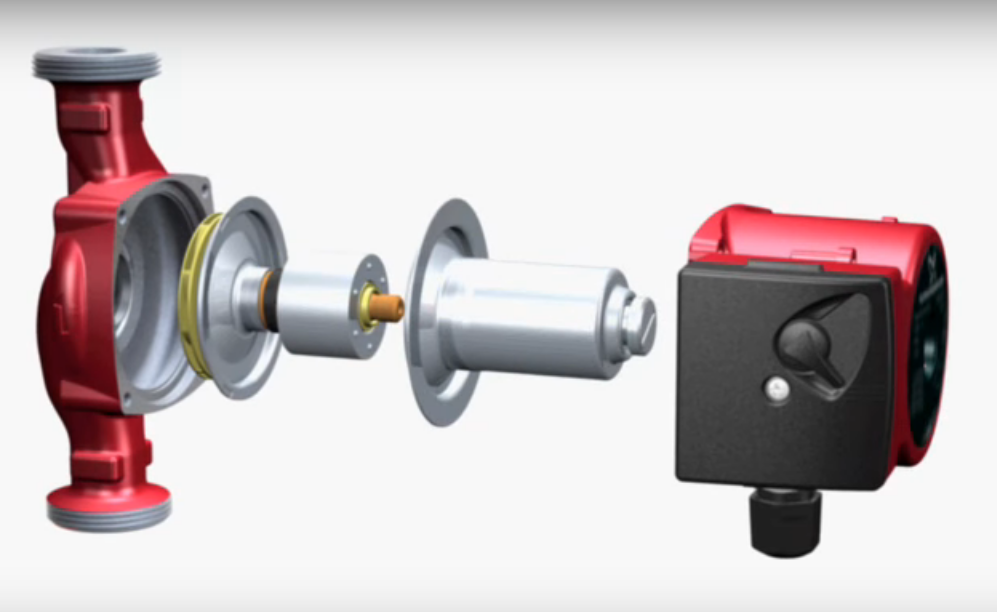
The pump for heating systems includes:
- Electrical engine;
- rotation rotor;
- Working wheel;
- body.
Two disks of the impeller with blades, which are located opposite to each other, when rotating, convert the energy of fluid movement into pressure. In this case, the aqueous medium cools the rotor shaft and continues to move in a given direction. This principle circulates liquid in a closed and closed piping system. The efficiency of this heating system directly depends on the circulation pumping equipment. The rotor is hermetically sealed by a cast iron or stainless steel housing from the electric motor and all electronics in order to exclude the possibility of water or antifreeze getting into the equipment control system.
Types of pumps for heating systems
To select the right pumping equipment, you need to know what type it belongs to. There are two types of pumps for heating systems: dry and wet rotor.
Dry rotor
The electric motor of this type of pumping unit does not have direct contact with the aqueous medium, which it forces to circulate through the pipeline. The mechanical seal extremely tightly isolates the pumping part of the circulation pump from the electric motor. The advantage of this type of pump is its high efficiency (efficiency over 80%). Dry rotor units are used to ensure the movement of a large volume of liquid, in most cases in centralized heating systems. The pump units are cooled by an air system, the use of which slightly increases the noise level during the operation of the unit.
Wet rotor
The design of this type of pumping equipment provides for the presence of both the impeller itself and the rotor of the electric motor in a watery environment, which in turn provides cooling of the constantly moving parts of the unit. The advantages are long-term operation, low operating noise and small pump size. It is easily installed and built into the pipeline, which eliminates the possibility of calling a service engineer again. The disadvantages of such structures are low efficiency (efficiency from 30 to 50%). Glandless rotor pumps are mainly used for the autonomous supply of heat to private houses and apartments. It is worth emphasizing that this type of pumping equipment is intended only for the heating system, and not for the supply of drinking water.
Installing the pump
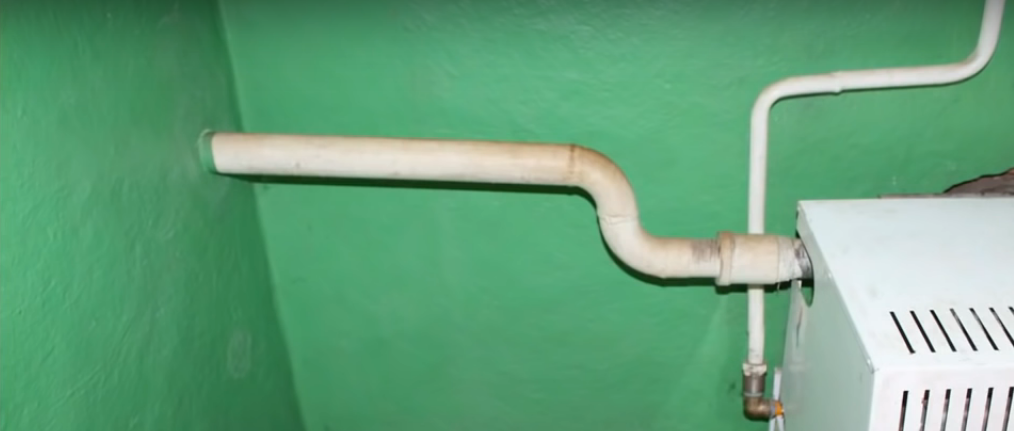
For the highest quality and reliable installation of pumping equipment, you must follow a few simple rules:
- The expansion tank is mounted at a height of 1 meter above the highest point of the heating system;
- The heating system must be equipped with an air outlet.
- The heating system must have a reserve pipeline in case of unforeseen emergencies.
Also, to install the pump unit, you need to observe simple conditions:
- About 10 m of the pipeline consumes about 0.6 m of the pump head. From this it follows that a head of 60 m will ensure the movement of liquid in a pipe 100 m long;
- The average speed of movement of the heat carrier is about 1.5-2 m / s;
- The smaller the diameter of the pipes, the more power of the pumping equipment will be required to circulate the aqueous medium.
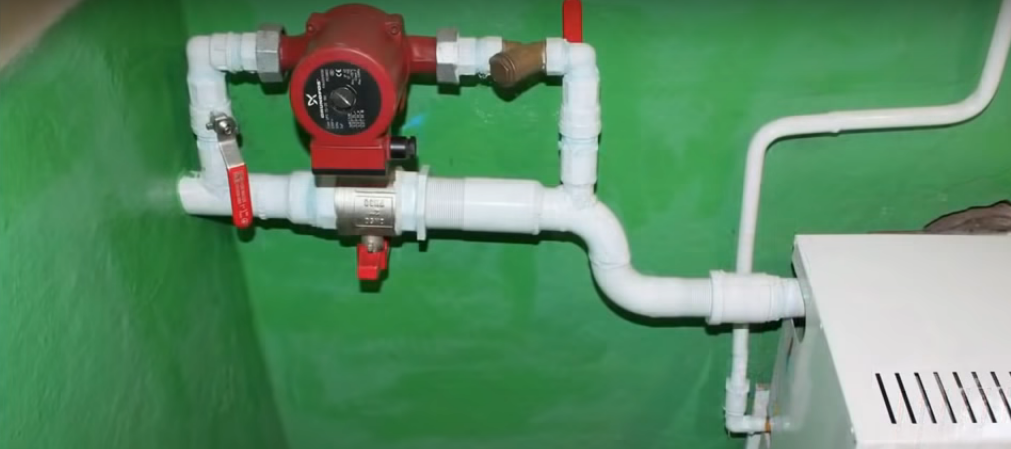
At the initial stage of the installation of the heating system, it is necessary to prepare all the components for installation, stock up on the necessary tools, and calculate the threaded connections with the pump unit. It is recommended to install a cleaning filter in front of the pump to prevent dirt and sand from entering the system. The direction of the circulating fluid must match the direction of the arrow shown on the body of the pumping equipment. It is advisable to install shut-off valves at the joints of the pipeline branch pipes for convenient repair of the heating system. Pumps with a wet rotor are installed only in a horizontal position, and with a dry rotor both horizontally and vertically.
15 best models of pumps for heating
BELAMOS BRS 25 / 4G
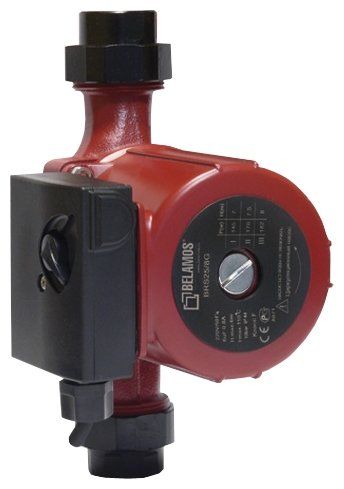
The fifteenth place is occupied by the surface pump BELAMOS BRS 25 / 4G, which is used for circular movement of various aqueous media in closed heat supply systems for premises. It is very popular as it has an optimal price and quality. The body of the pump unit is cast and made of cast iron. The ceramic sealing device ensures a very high and reliable tightness. This pump model can be installed both in a private house and in an apartment of a multi-storey building.
- Protection category ip44;
- Reliable pressure.
- Poor quality fasteners.
Oasis CR 25/4
On the fourteenth place is the Oasis CR 25/4 surface heat supply pump, the throughput of which allows to avoid significant heat losses due to the adjustment of hot liquid circulation. It works quite quietly, which allows you to install the pump in a variety of places without fear of hearing extraneous sounds. Turning on a certain power mode of the unit will allow you to adjust the operation of the pumping equipment according to the conditions of the heating system. The wet rotor design allows this model to do its job for a long time.
- Blocking current is present;
- Simple assembly work.
- There are fasteners with defects.
UNIPUMP UPC 25-40
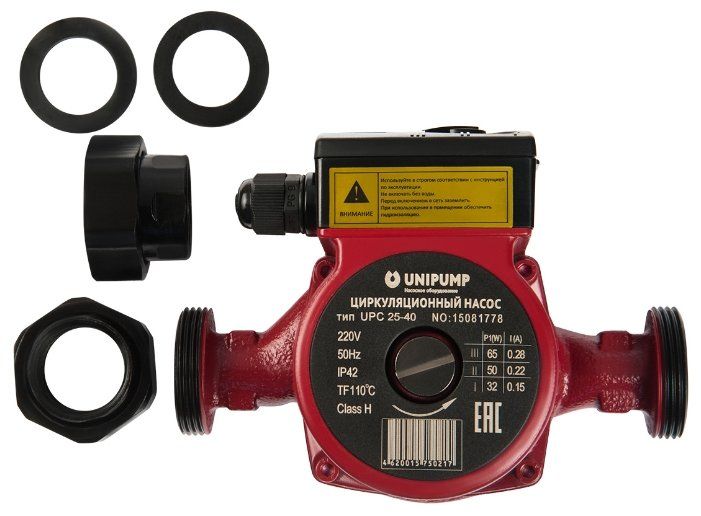
In thirteenth place is the UNIPUMP UPC 25-40 heating pump unit with a wet rotor, the use of which is to provide a forced circular movement of a watery medium through a closed pipeline at high temperatures.The equipment has the ability to mechanically switch 3 power levels with a 3-position switch. The heat carrier can be water of low hardness, non-combustible liquids without solid additives or impurities with mineral oils.
- Great power;
- 3 operating modes.
- Large mass.
КМ RS25 / 4G-180
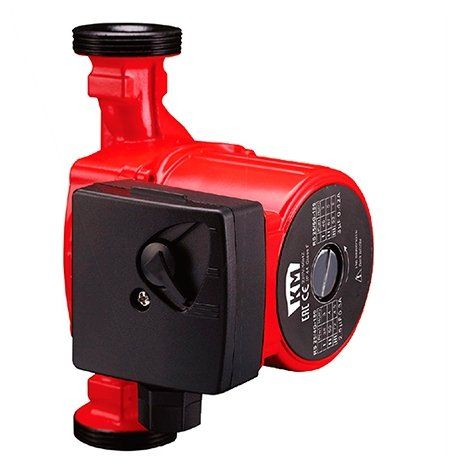
In twelfth place is the surface heat supply pump KM RS25 / 4G-180. The unit is intended for heat supply by forced movement of a clean aqueous medium through a closed pipeline. The pumping device is installed in the heating system in two positions: horizontal and vertical. Three speeds of the electric motor control the speed of the rotor shaft, which allows the pressure in the circuit to be varied. The design of the pump has a system of protection against the ingress of solids and particles from 1 mm.
- Two installation positions;
- Power regulation.
- For pure water only.
Grundfos UPS 32-40 180
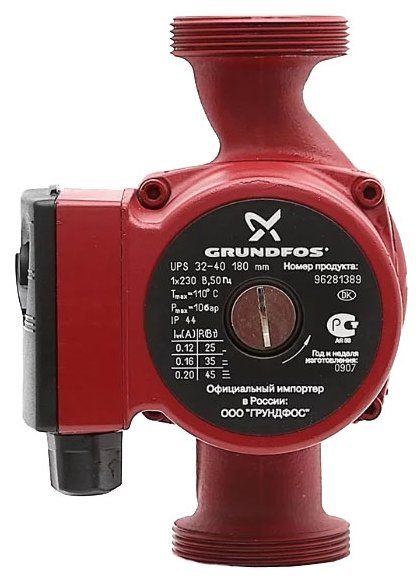
In eleventh place is the single-stage pumping unit Grundfos UPS 32-40 180 with three speeds and a horizontal shaft. Switching speed modes affects the speed of rotation of the impeller. The electric motor is equipped with a protection system against overheating if there is a blockage of the moving parts of the pump. The design of the pump unit excludes the presence of oil seals, because the rotor is hermetically sealed from the stator. It has an optimal ratio of price and quality, which, of course, is a competitive advantage.
- Convenient installation;
- Quiet pump operation.
- Insecure fasteners.
WWQ CN 25 / 60-180
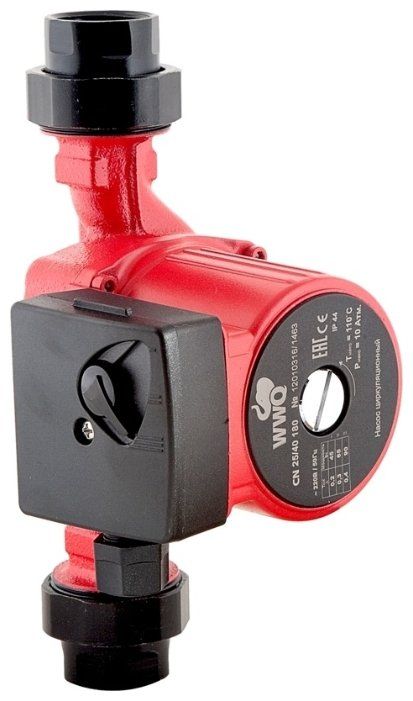
In tenth place is the surface pumping unit WWQ CN 25 / 60-180, which is installed in country private houses to ensure circular pumping of the heat carrier in heat supply systems by pressurizing the pipelines. Thanks to the built-in centrifugal mechanism, the circulation pump can easily handle the loads. The pumping equipment is equipped with a safety system in which the pump stops working if the electric motor overheats.
- 3-speed work;
- Overheat protection.
- Short network cable.
JEMIX WRF-50/12
In ninth place is the circulation pump JEMIX WRF-50/12. The unit with a wet rotor, which provides cooling of the bearings, significantly low noise level, long duration of operation and operation. The design of this pumping equipment differs from the versions of other pump models by flange connection to the heating system pipeline. Such a circulation pump can be used to supply heat to both a small cottage and a house with more than two floors.
- High power;
- Great pressure.
- The need to weld counter flanges to the pipeline.
Valtec VRS 25/4 130
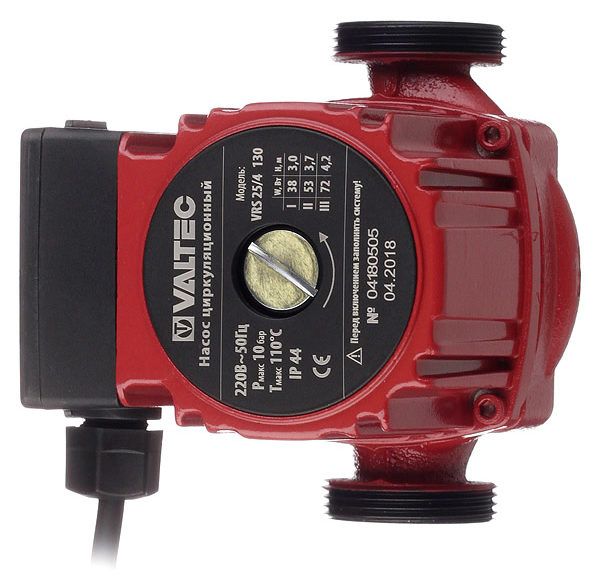
In eighth place is the Valtec VRS 25/4 130 pump circulation unit. The body of this model is made of cast iron, the rest of the important components, such as the rotor shaft, bearings, fasteners and so on, are ceramic with a mirror finish. The pump is installed in various positions, both horizontally and vertically, but on condition that the rotor shaft must be horizontal. The unit can withstand the temperature of the aqueous medium up to 110 0C at a maximum pressure of 10 bar. The wet rotor design cools itself with the pumped liquid.
- Low cost;
- Sealed fasteners.
- Short power cord.
Grundfos ALPHA1 L 25-60 180
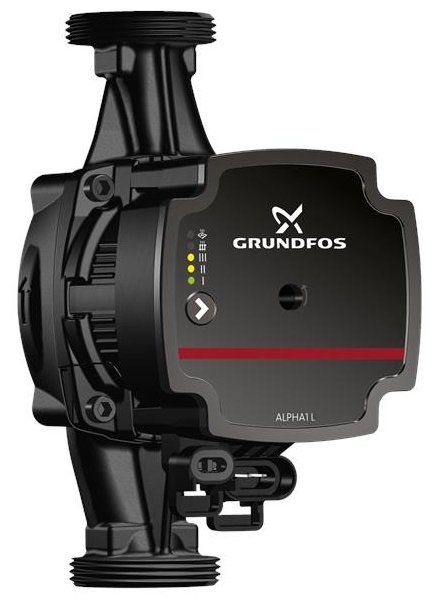
In seventh place is the surface pump for heat supply systems Grundfos ALPHA1 L 25-60 180. This product is used for forced pumping of a watery medium through a pipeline. The device is installed in two positions: horizontal and vertical positions. But the shaft on which the impeller is fixed must not be installed vertically. The pump has a night mode, which is activated by one button.There is also a mode of automatic adjustment of the pumping unit to the conditions of the heating system.
- Performance adjustment;
- Dust protection.
- Low power.
Grundfos UPS 25-80 180
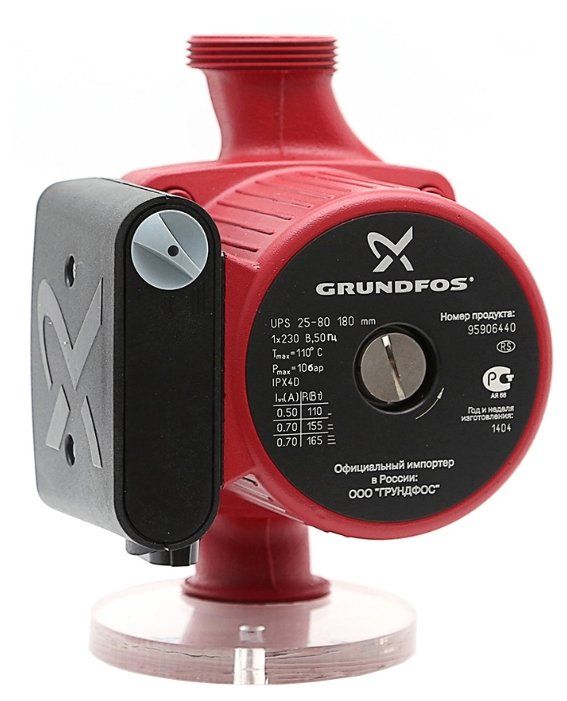
In sixth place is the Grundfos UPS 25-80 180 circulating pumping device. This model is used in heat supply systems with 3-stage control, the design of which provides for a wet rotor, which provides lubrication and cooling of ceramic bearings located on the shaft. Thanks to this, the pump runs quietly, and the service life of the device is increased. The modern electric motor saves electrical energy.
- High power;
- Easy adjustment of performance and pressure.
- High price.
Grundfos ALPHA2 25-60 180

In fifth place is the pumping unit for heating systems Grundfos ALPHA2 25-60 180. The advantages of this pump are low noise and quality of construction. It is very easy to install and operate, which allows it to be built into the heating system of an apartment in a multi-storey building. This pumping equipment is equipped with both a manual and an automatic adjustment system for optimal pump operation in the heating system. The design of the pump is so high-quality and reliable that the manufacturer gives a guarantee of 5 years of uninterrupted operation of the product.
- Low noise performance;
- Convenient installation.
- High price.
Grundfos UPS 25-60 180
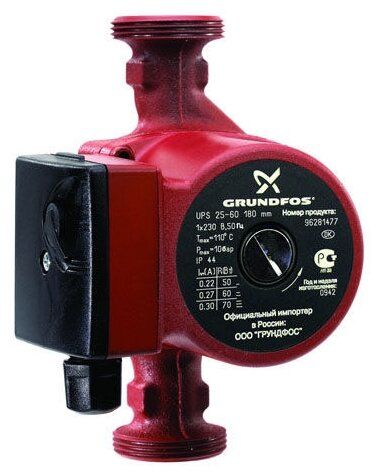
In fourth place is the Grundfos UPS 25-60 180 pumping unit. This model is a pump consisting of a horizontal shaft and a single-acting impeller with a wet rotor. The design of the product provides for small dimensions and weight. The pump operates quite quietly and consumes significantly little electrical energy. The pumping equipment has 3 speeds, switching of which changes the speed of rotation of the shaft of the electric motor, which in turn regulates the pressure in the pipeline.
- Silent;
- Three speeds;
- Small size and weight.
- Not found.
Oasis CN 25/4
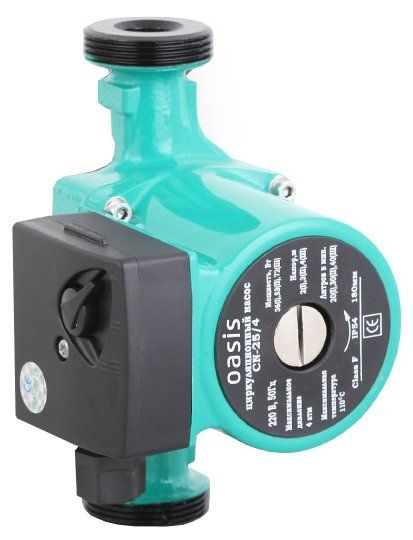
In third place is the Oasis CN 25/4 heating circulation pump, which provides forced circulation of a watery medium in heating systems. This unit is excellent in that it can be used to provide heating for rooms over 100 square meters. The pump is very compact and lightweight and does not consume much electrical energy and makes a noticeable noise during operation. The wet rotor design lubricates and cools all moving parts of the machine.
- Small amount of consumed electricity;
- Easy assembly, disassembly.
- Noises.
VORTEX TsN-25-4
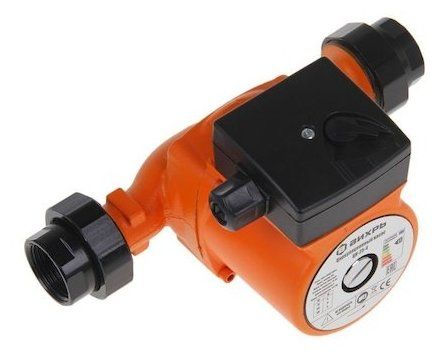
In second place is the VORTEX TsN-25-4 circulation pumping device, the purpose of which is the forced circular pumping of cold or hot liquid in the heating systems of houses and apartments. This equipment is convenient to use in centralized heating systems. The pump is very easy to operate, economical in energy consumption, easy to install. It works quite quietly, has small dimensions, and is used for a long time.
- Long trouble-free work;
- Low price.
- The declared characteristics sometimes do not correspond to the real ones.
Grundfos UPS 25-40 180
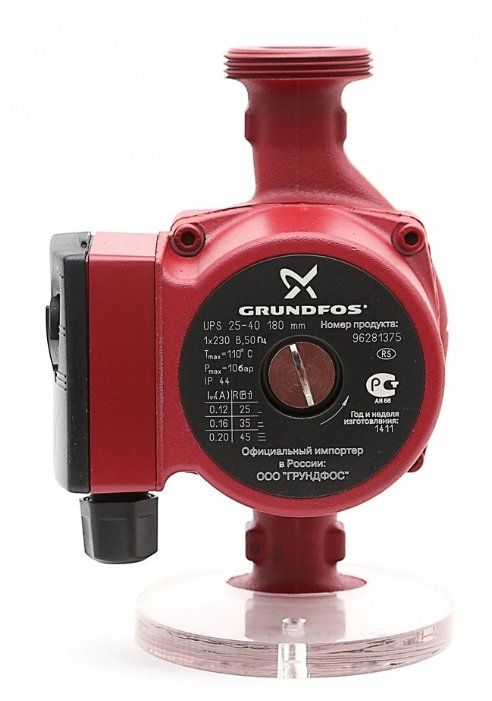
In the first place - pumping equipment for heat supply systems Grundfos UPS 25-40 180. Among the leaders among the sales of pumps for heating systems. This model of pumping units has been produced in Serbia for over 15 years, and during all this time it has not lost interest in itself. The pump has a mechanical adjustment system, it is distinguished by its simple operation and design reliability. The downside of the unit is that it is often faked and sold as a low quality pump. To solve this problem, the manufacturer has created a database on the official website, with which you can check the authenticity of products by entering the serial number.
- Good pressure;
- High performance.
- Possibility of product counterfeiting.
Characteristics of the first five models of heating pumps
| Manufacturer | Grundfos | Knight | Oasis | Grundfos | Grundfos |
|---|---|---|---|---|---|
| Model | UPS 25-40 180 | TsN-25-4 | CN 25/4 | UPS 25-60 180 | ALPHA2 25-60 180 |
| Pump type | circulating | circulating | circulating | circulating | circulating |
| Rotor type | wet | wet | wet | wet | wet |
| Performance | 2.93 cubic meters per hour | 3 cubic meters per hour | 3.6 cubic meters per hour | 4.35 cubic meters per hour | 2.8 cubic meters per hour |
| Pressure | 4 m | 4 m | 4 m | 6 m | 6 m |
| Power | 45 watts | 72 watts | 72 watts | 60 watts | 34 watts |
| Body material | cast iron | cast iron | cast iron | cast iron | cast iron |
| Thread diameter | 1 1/2" | 1 1/2" | 1 1/4" | 1 1/2" | 1 1/2" |
| Liquid temperature | from 2 to 110 degrees | from -10 to 110 deg. | from -10 to 110 deg. | from 2 to 110 degrees | from 2 to 110 degrees |
| Weight | 2.6KG | 3 Kg | 2.68 kg | 2.6KG | 2.1 kg |
How to choose the right pump for a heating system
The circulating pump is designed for periodic movement along the heating medium pipeline: water or antifreeze, which ensures the optimal ambient temperature in the room. By choosing the right pumping equipment, you can significantly save on gas and electricity consumption.
When choosing a circulation pump for heating systems, it is necessary to take into account the main and auxiliary characteristics of the unit.
Main characteristics
- Power
Basically, the power value of the heat pump is in the range of 60-300 W. This is the main characteristic that is worth paying special attention to, as it determines the overall temperature scheme of the heating system. When choosing a pump, it is not recommended to focus on units with maximum power, since the pumping equipment is not designed to move a large amount of cubic meters of hot liquid for heating large areas of premises.
- Performance
Productivity is the amount (volume) of fluid displaced over a period of time. This characteristic directly depends on the power of the pumping equipment and the diameter of the heating system pipeline.
- Pressure
The head, in essence, is the hydraulic resistance. Its value is measured in meters and indicates how high the pump can lift the entire volume of liquid.
Auxiliary characteristics
- Connection dimensions
The dimensions for connecting and installing the pump in the heating system are mainly selected based on the diameters of the pipelines and the dimensions of the unit itself.
- Temperature
Since the pump is designed to provide heat to living quarters, its piping must withstand high temperature loads. This characteristic must be coordinated with the temperature characteristics of the heating boiler and pipes used in the heating system.
Output
In 2020, pumps for heating systems are very popular and widespread due to the fact that they are easy to install and operate without the assistance of service engineers. A diverse range of models and a huge range of pump characteristics provide any apartment, country cottage, private house, summer cottage with high-quality and reliable heat supply, which is so necessary for a comfortable and cozy holiday on picturesque cold winter evenings.
new entries
Categories
Useful
Popular articles
-

Top rating of the best and inexpensive scooters up to 50 cubic meters in 2020
Views: 97661 -

Rating of the best materials for noise insulation for an apartment in 2020
Views: 95022 -

Rating of cheap analogues of expensive medicines for flu and colds for 2020
Views: 91750 -

The best men's running shoes in 2020
Views: 87680 -

Top ranking of the best smartwatches 2020 - price-quality
Views: 85091 -

Best Complex Vitamins in 2020
Views: 84801 -

The best dye for gray hair - 2020 top ranking
Views: 82406 -

Rating of the best wood paints for interior use in 2020
Views: 77202 -

Ranking of the best action cameras from China in 2020
Views: 75269 -

Rating of the best spinning reels in 2020
Views: 74827 -

The most effective calcium supplements for adults and children in 2020
Views: 72462 -

Top rating of the best means for male potency in 2020 with a description
Views: 68296

